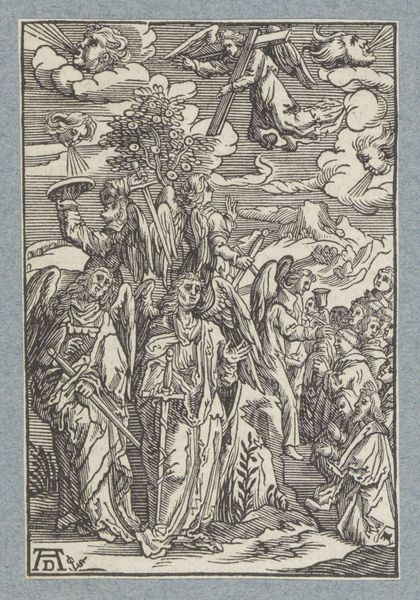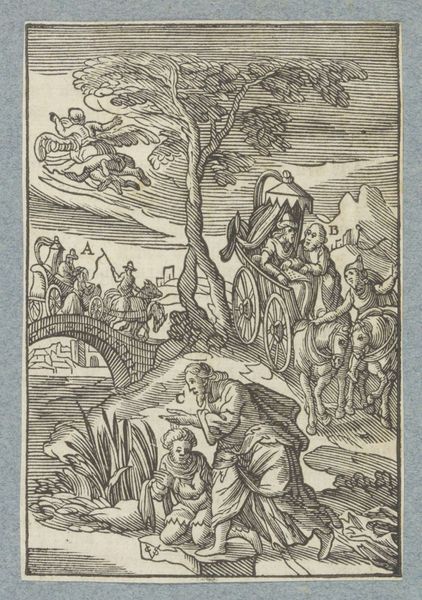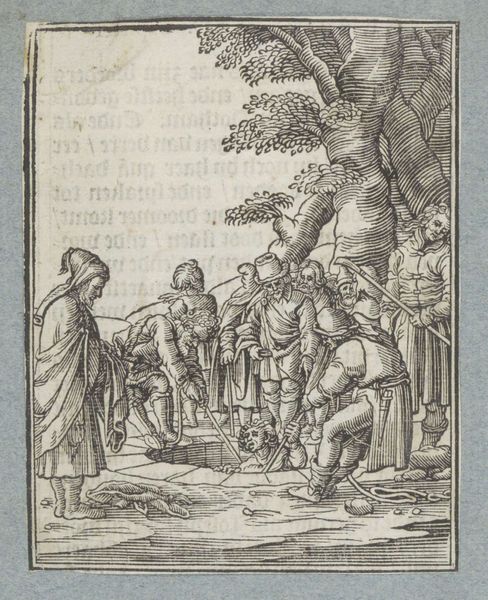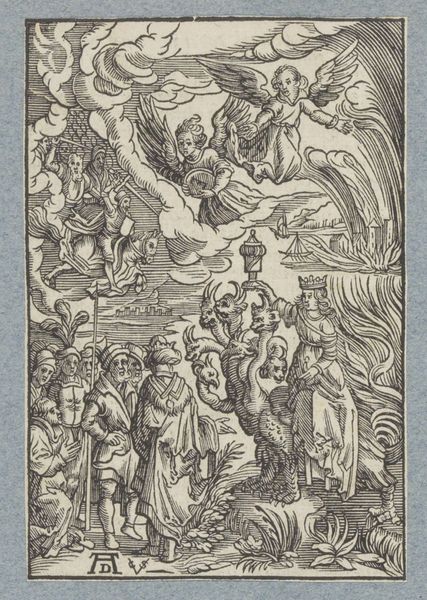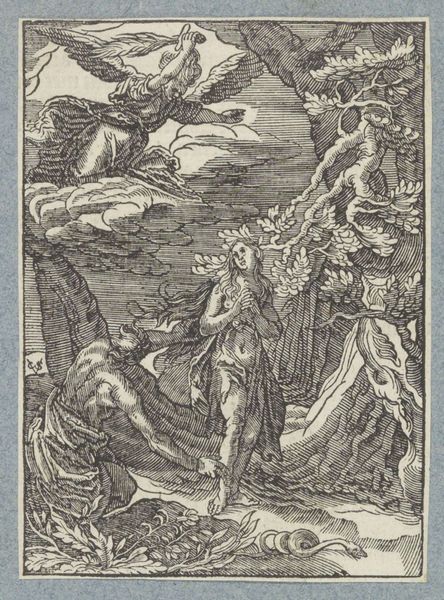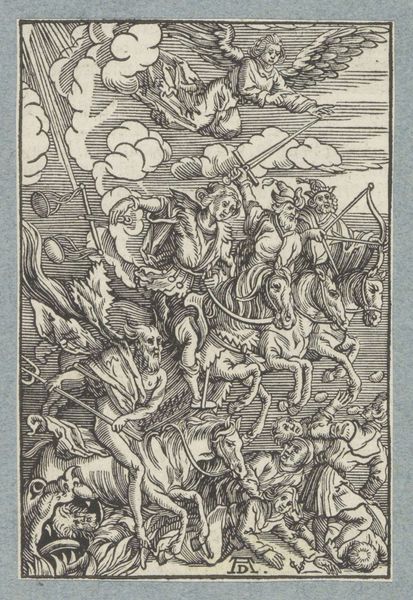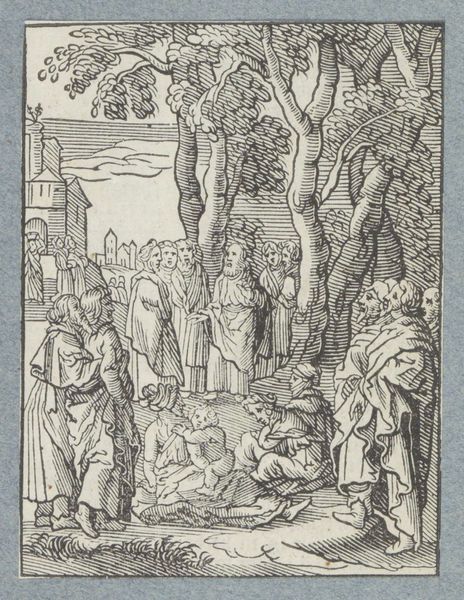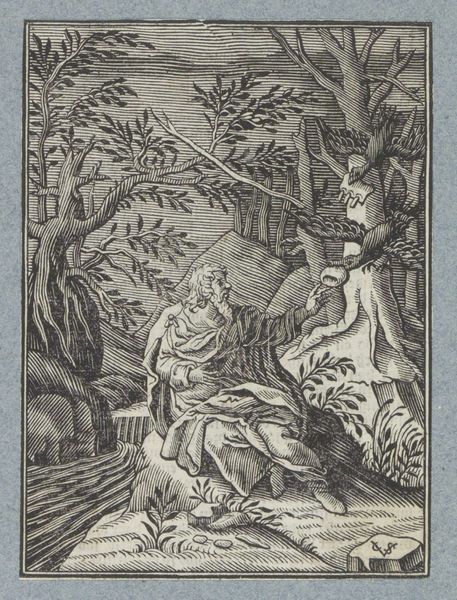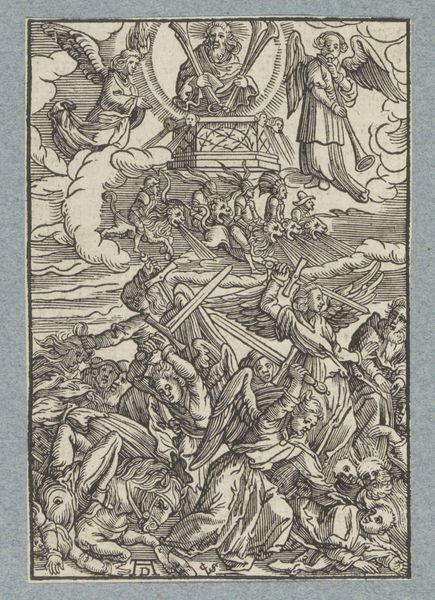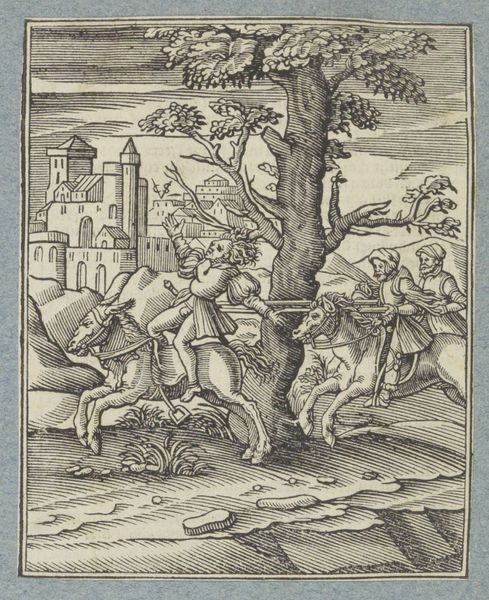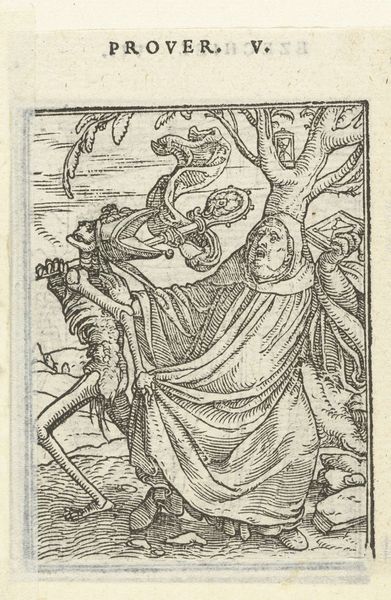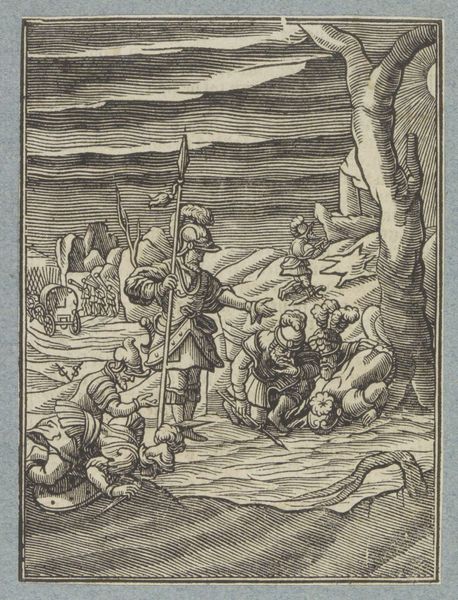
print, engraving
#
narrative-art
#
baroque
# print
#
figuration
#
history-painting
#
engraving
#
realism
Dimensions: height 107 mm, width 87 mm
Copyright: Rijks Museum: Open Domain
Curator: This stark engraving by Christoffel van Sichem II, made between 1645 and 1646, depicts a rather brutal scene: "The Hanging of the Five Amorite Kings." Editor: What strikes me immediately is the tension created by the linework. It's almost brutalist in its stark contrasts of black and white, evoking a palpable sense of dread and finality. Curator: Indeed, the narrative is quite explicit. It references a biblical story from the Book of Joshua, where Joshua defeats the Amorite kings and then publicly executes them. It’s about justice, divine retribution, and a display of power. Note the way the artist emphasized certain elements. The ladder leading to the hanged figures, a detail underscoring a very earthly and constructed act. Editor: The composition is compelling; a chaotic, asymmetrical grouping, typical of Baroque dynamism, where figures spill beyond the implied frame of the print. Look at the tree itself! It becomes an ominous visual scaffold both structural and symbolic. Curator: Trees in art often connect us to the natural order and, of course, death by hanging links to the notion of societal order – or disorder if we’re talking about mob rule or illegal justice. Do these hangings denote righteous victory or something darker: savagery cloaked in piety? This is historical art that allows many interpretations. Editor: And the use of line amplifies that ambiguity! Thick, assertive strokes define the soldiers and executioners, but the crosshatching adds depth and shadows, making the whole scene claustrophobic and unsettling. There’s a tension between clarity and obfuscation which further heightens the scene's emotional complexity. Curator: Ultimately, Sichem offers us not just a historical record, but a meditation on the precariousness of power, the spectacle of violence, and the moral complexities inherent in religious and political conquest. The Rijksmuseum is fortunate to preserve and display this print for our observation. Editor: Yes, it serves as a graphic example of how formal artistic choices and the history of its production both contribute to meaning and engagement. The interplay between form and content encourages contemplation of darker impulses.
Comments
No comments
Be the first to comment and join the conversation on the ultimate creative platform.
